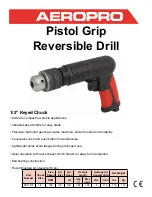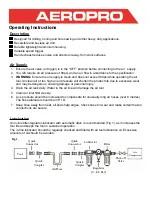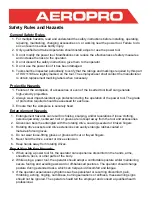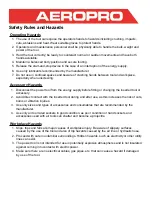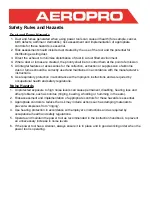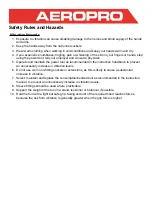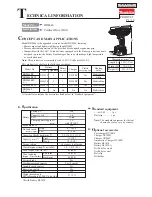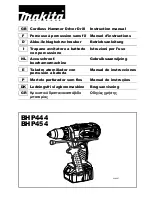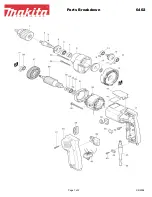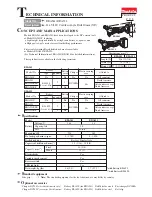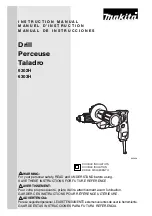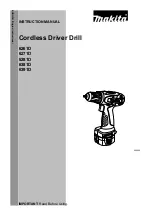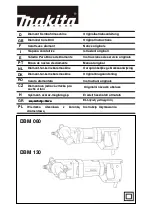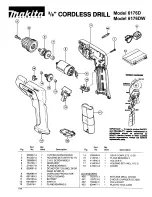
Safety Rules and Hazards
Residual Risks
Even when the tool is used as prescribed it is not possible to eliminate all residual risk factors.
The following hazards may arise in connection with the tool’s construction and design:
1.
Damage to lungs if an effective dust mask is not worn.
2.
Damage to hearing if effective hearing protection is not worn.
3.
Health defects resulting from vibration emission if the power tool is being used over
longer period of time or not adequately managed and properly maintained.
4.
Damage to eyes if sufficient eye protection is not worn.
Important Safety Rules
1.
Follow all workshop safety rules, regulations, and conditions when using air tools.
2.
Do not wear watches, rings, bracelets or loose clothing when using air tools.
3.
WARNING:
Disconnect from air supply before changing accessories or servicing.
4.
Maintain the air tool in good condition and replace any damaged or worn parts. Use genuine
parts only. Non-authorised parts may be dangerous.
5.
WARNING:
Check correct air pressure is maintained and not exceeded. 90psi recommended.
6.
Keep air hose away from heat, oil and sharp edges. Check air hose for wear before each use
and ensure that all connections are secure.
7.
Only use accessories (sockets, drills, chisels etc) which are specifically designed for use with
an air tool.
8.
Wear approved safety eye/face shield, ear defenders and hand protection.
9.
WARNING:
Due to the possible presence of asbestos dust from brake linings, when working
around vehicle brake systems, ensure suitable respiratory protection is worn.
10.
Maintain correct balance and footing. Ensure the floor is not slippery and wear non-slip shoes.
11.
Keep children and non-essential persons away from the working area.
12.
DO NOT use the air tool for a task it is not designed to perform.
13.
DO NOT use air tool if damaged or thought to be faulty.
14.
DO NOT use the air tool unless you have been instructed in its use by a qualified person.
15.
DO NOT carry the air tool by the air hose.
16.
DO NOT direct air from the air hose at yourself or others.
17.
When not in use disconnect from air supply and store in a safe, dry, childproof location.

